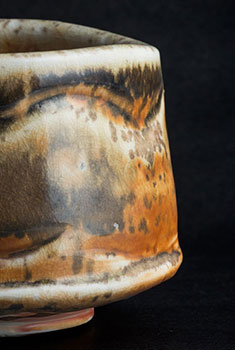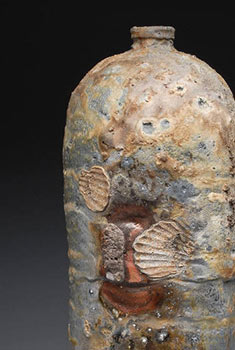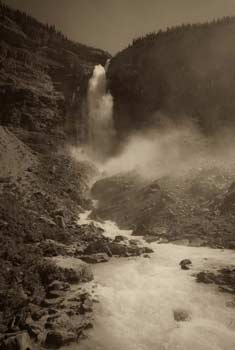- Ceramics
- Artist Pages
- Asian Ceramics & Tea
- Ceramics Artist Links
- Ceramics Links
- Ceramics Terms Glossary
- Agateware
- Banding Wheel
- Bat, Throwing Bat
- Bisqueware, Biscuit Ware
- Blistering
- Blow Up
- Boat Anchor
- Calipers
- Carbon Coring, Black Coring
- Carbon Trap
- Chuck, Chum
- Coil
- Colorants
- Crazing
- Downdraft Kiln
- EPK, Edgar Plastic Kaolin
- Electric Kiln
- Extrusion, Extruder
- Fettle, Fettling Knife
- Force Dry
- Greenware
- Kaolinite
- Kilnsitter
- Overglaze
- Pinholing
- Plucking
- Pug Mill
- Pyrometric Cones
- Raku
- Rib
- Sgraffito
- Shelf Of Shame
- Slab Roller
- Slip
- Test Tile
- Knowledge
- Frequently Ignored Answers
- Photography
- Photographers
- Photo Links
- Raw File Converters
- Camera Simulators
- Color Vision Games
- Frequently Ignored Answers
- Resources
- Contact
Balance
The distribution of interest or visual weight in a work. If all the visually interesting elements of a work are centered in one spot, the work is off-balance and the viewer's gaze will be stuck in one place, ignoring the rest of the piece. A balanced piece of work will have art elements arranged such that different areas draw the viewer's eye around or through the whole piece. Some types of balance are symmetric, asymmetric, and radial.
The concept of visual balance is often illustrated using a seesaw. Like a seesaw, when two elements of an artwork have the same visual weight and are on opposite sides of the center, equally distant from it, they balance. Likewise, a smaller element can balance out a larger one if the smaller one is farther from the center and the larger one nearer. In two-dimensional art, the center of the work serves as the fulcrum (the visual center). In three-dimensional art, visual balance and the physical balance of mass both come into play, and the balance of one does not assure the balance of the other.
Symmetric or Formal Balance
Symmetry is the way in which one part of something duplicates another part - it is a type or class of pattern. There are different types of symmetry, but when talking about symmetric balance, what is usually meant is bilateral symmetry, where one side or half of something is the mirror image of the other half. Symmetric balance is also called formal balance, as it tends to lead to stable, orderly designs that are less dynamic than asymmetric works.
Near symmetry, where two halves are not exactly the same but still balance, is a variety of symmetry commonly used in art and seen in nature. In art, small differences between the two halves of something can be used to create more visual interest and liveliness and to lessen rigidity. Larger differences will create asymmetry, which may or may not balance.
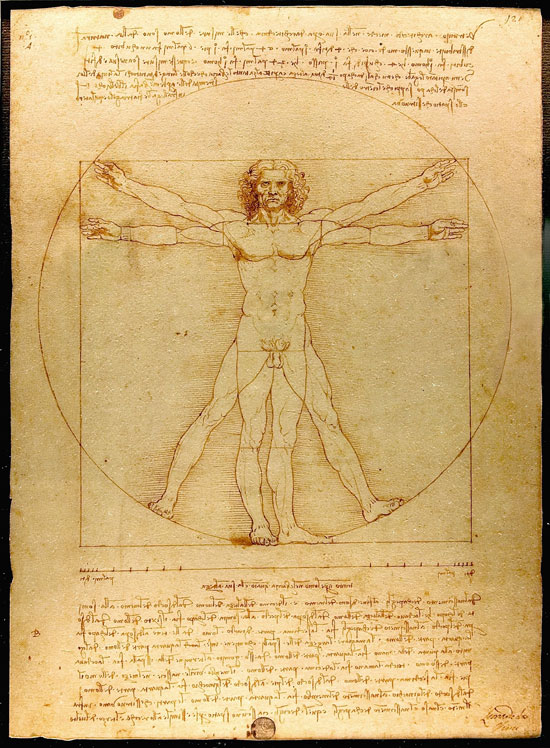
Leonardo da Vinci - Vitruvian Man, c. 1487, Pen and ink with wash over metalpoint on paper, 34.4 × 25.5 cm

Judith Braun
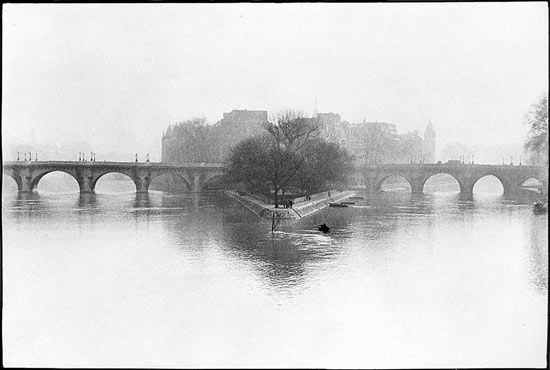
Henri Cartier-Bresson - Ile de la Cité, 1952, gelatin silver print, 11.5 x 17.5 in.
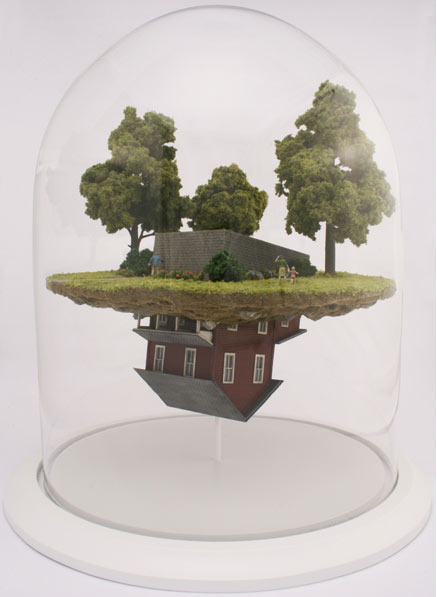
Thomas Doyle - The Barrage Lifts, 2010, mixed media, 16 x 13.5 in.
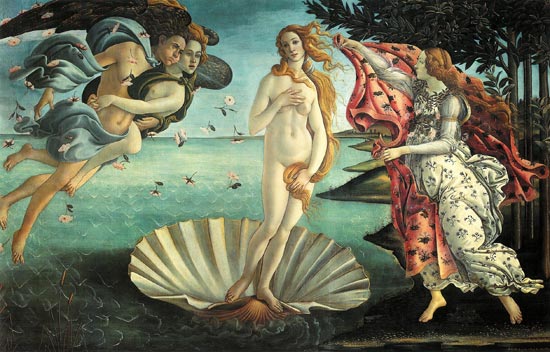
Sandro Botticelli - Birth of Venus (La Nascita di Venere), c. 1486, tempera on canvas, 109.65 x 67.91 in.
Asymmetric Balance
This is a type of balance created by unlike things. One large shape might be balanced by several smaller ones or one smaller one farther from center; one large common shape might be balanced by a small irregular one; a dominant element of dull color can be balanced by a patch of something bright; a small area with lots of texture or detail might balance a larger smoother or less varied area; etc.
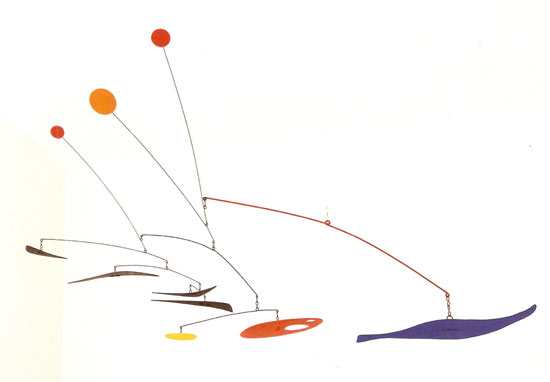
Alexander Calder - Four Boomerangs, 1954, sheet metal, wire and paint, 39 x 63 in.
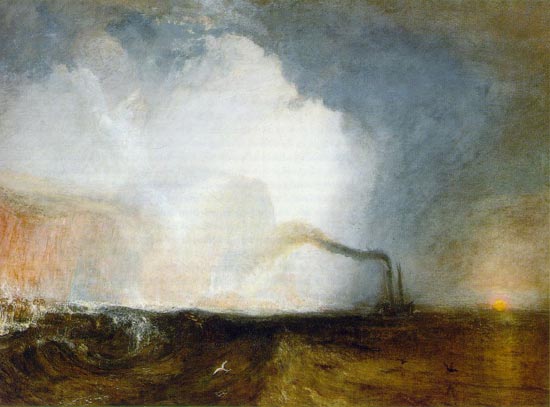
Joseph Mallord William Turner - Staffa, Fingal's Cave, 1832, oil on canvas, 90.9 x 121.4 cm. The large white mass of mist and cloud that envelopes the isle of Staffa and its cave is balanced by the ship steaming off to the sun at the edge.
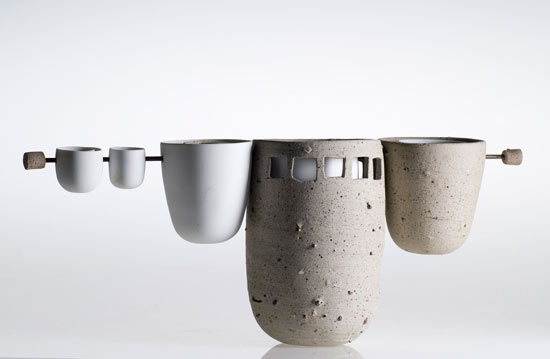
Megan Puls - Reserve 2, 2011, mixed clays and porcelain
Radial Balance
As with rotational or radial symmetry, balance is created by distributing parts evenly in a radial manner around the centerpoint.

Merete Rasmussen
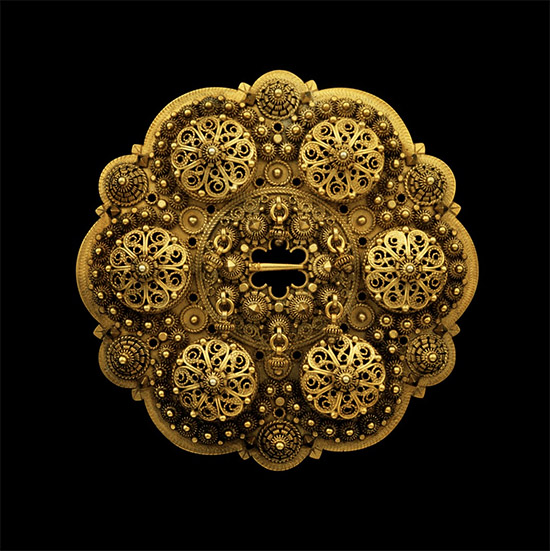
Lori Talcott
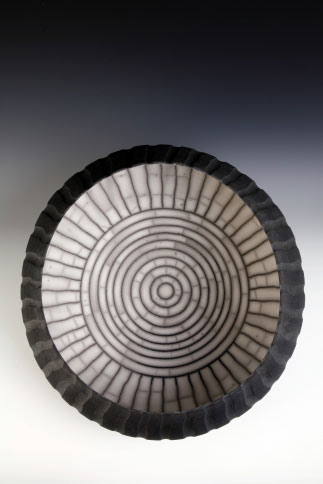
David Roberts - Eroded Bowl, 56 x 28 cm


